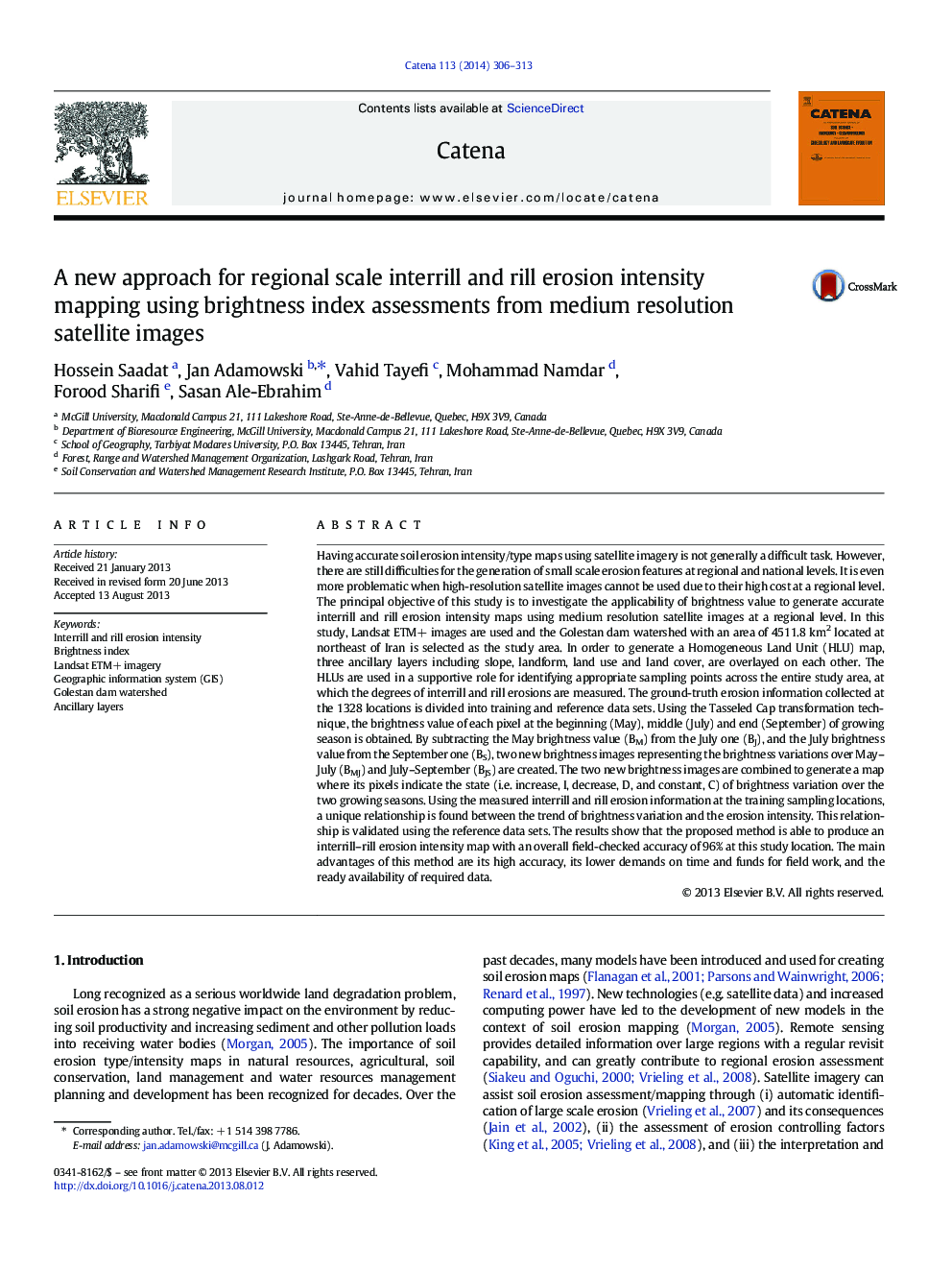| کد مقاله | کد نشریه | سال انتشار | مقاله انگلیسی | نسخه تمام متن |
|---|---|---|---|---|
| 4571535 | 1629239 | 2014 | 8 صفحه PDF | دانلود رایگان |
• Interrill and rill erosion intensity mapping using medium resolution satellite images.
Having accurate soil erosion intensity/type maps using satellite imagery is not generally a difficult task. However, there are still difficulties for the generation of small scale erosion features at regional and national levels. It is even more problematic when high-resolution satellite images cannot be used due to their high cost at a regional level. The principal objective of this study is to investigate the applicability of brightness value to generate accurate interrill and rill erosion intensity maps using medium resolution satellite images at a regional level. In this study, Landsat ETM+ images are used and the Golestan dam watershed with an area of 4511.8 km2 located at northeast of Iran is selected as the study area. In order to generate a Homogeneous Land Unit (HLU) map, three ancillary layers including slope, landform, land use and land cover, are overlayed on each other. The HLUs are used in a supportive role for identifying appropriate sampling points across the entire study area, at which the degrees of interrill and rill erosions are measured. The ground-truth erosion information collected at the 1328 locations is divided into training and reference data sets. Using the Tasseled Cap transformation technique, the brightness value of each pixel at the beginning (May), middle (July) and end (September) of growing season is obtained. By subtracting the May brightness value (BM) from the July one (BJ), and the July brightness value from the September one (BS), two new brightness images representing the brightness variations over May–July (BMJ) and July–September (BJS) are created. The two new brightness images are combined to generate a map where its pixels indicate the state (i.e. increase, I, decrease, D, and constant, C) of brightness variation over the two growing seasons. Using the measured interrill and rill erosion information at the training sampling locations, a unique relationship is found between the trend of brightness variation and the erosion intensity. This relationship is validated using the reference data sets. The results show that the proposed method is able to produce an interrill–rill erosion intensity map with an overall field-checked accuracy of 96% at this study location. The main advantages of this method are its high accuracy, its lower demands on time and funds for field work, and the ready availability of required data.
Journal: CATENA - Volume 113, February 2014, Pages 306–313
